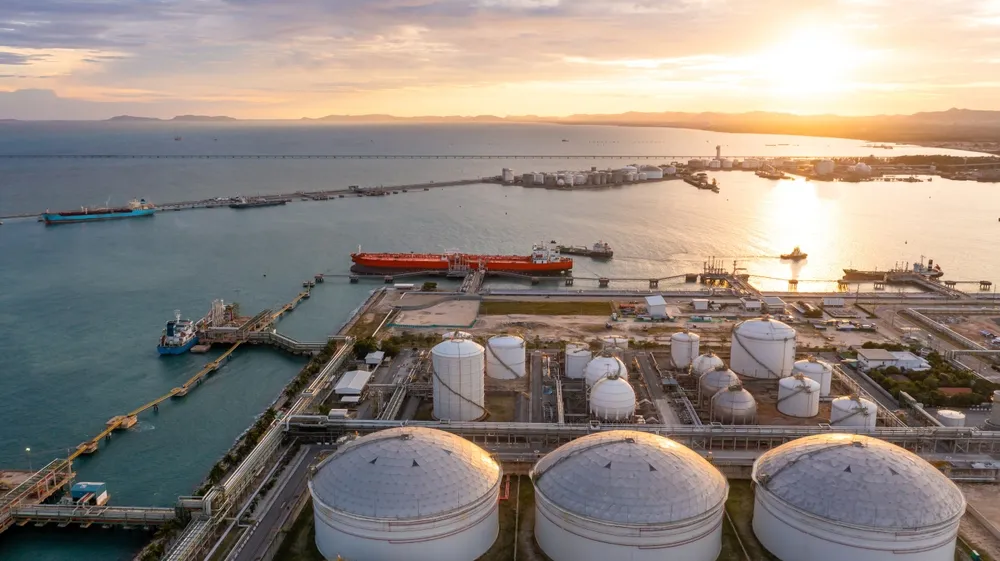Introduction
Bulk liquid product transfer is a fundamental activity in international trade, facilitating the efficient movement of large volumes of essential goods. This article highlights the relevance of this activity to the global economy, focusing on its impact on the global supply chain. It will examine the different types of liquid products, the infrastructure and equipment used, the processes involved, as well as the challenges and opportunities faced by the sector.
The importance of safe and efficient management in the transfer of these products cannot be underestimated, as it directly influences the stability and economic growth of many nations.
Definition and types of bulk liquid products
Bulk liquid products encompass a wide range of substances, including petroleum, chemicals, and liquid food products. These products are characterized by being stored and transported in large volumes, which requires efficient and safe management. Petroleum, for example, is one of the most critical products, with a direct impact on the global economy due to its use as a primary energy source. In addition to petroleum, industrial chemicals such as acids and bases are essential for various manufacturing industries, while liquid food products such as oils and juices play a crucial role in the food industry.
Infrastructure and equipment used
The infrastructure required for the bulk liquid product transfer includes storage tanks, loading and unloading terminals, and a network of pipelines. Specialized equipment, such as high-capacity pumps, control valves, and monitoring systems, are essential to ensure safe and efficient operation. Safety standards and regulations, such as those established by the API (American Petroleum Institute) and OSHA (Occupational Safety and Health Administration), are crucial for minimizing risks and ensuring the integrity of operations. Additionally, the implementation of advanced technologies, such as leak detection sensors and automated flow control systems, significantly enhances the safety and efficiency of the process.

Bulk liquid product transfer process
The process of transferring bulk liquid products involves several critical steps, from loading and unloading to storage. The techniques used vary depending on the type of product and operating conditions. Loading and unloading can be done using pumping systems or gravity, each with its own technical challenges. Risk management, such as handling spills and leaks, requires advanced solutions, including detection and rapid response systems. Implementing standardized procedures and continuous staff training are essential for adequately managing these risks. Additionally, the use of technologies such as real-time monitoring and artificial intelligence to predict potential failures can optimize the safety and efficiency of the process.
Economic impact
Bulk liquid product transfer is vital for international trade, facilitating the movement of large volumes of essential products. This activity has a significant impact on the global supply chain, allowing exporting countries to leverage their resources and importing countries to meet their demands efficiently. The economic benefits include job creation, infrastructure development, and GDP growth. Additionally, the ability to move large volumes of products efficiently reduces logistical costs and enhances the competitiveness of products in the global market. Investments in infrastructure and technology for bulk liquid product transfer can also stimulate regional economic growth and promote industrial development.
Managing bulk liquids towards the future
The management of bulk liquids is rapidly evolving thanks to technological innovations and sustainable practices. As industries seek to improve efficiency and reduce their environmental footprint, new technologies and approaches are being adopted.
Technological innovations
One of the main areas of innovation is digitalization. Real-time operations management systems are enabling more precise and efficient control of liquid product flow. These systems use real-time data to optimize operations, reduce wait times, and minimize the risks of spills and leaks. For example, the use of advanced sensors and the Internet of Things (IoT) allows continuous monitoring of tank and pipeline conditions, providing early warnings of potential problems.
Sustainable practices
Sustainability is an increasing priority in the management of bulk liquids. Companies are implementing more eco-friendly practices, such as using recyclable materials and reducing greenhouse gas emissions. Additionally, technologies are being developed to improve energy efficiency in the transport and storage of liquid products. For example, new designs of ships and tanks are optimized to consume less energy and reduce emissions.
Practical examples
A notable example is the Port of Rotterdam, which has adopted advanced automation and monitoring technologies to improve operational efficiency and reduce environmental risks. Additionally, the Port of Singapore is using real-time operations management systems to optimize the flow of liquid products and minimize wait times. These innovations not only enhance operational efficiency but also promote sustainability and reduce environmental impact.
Challenges and future opportunities
The sector faces significant challenges, including increasingly strict environmental regulations and the need to improve operational safety. However, there are also opportunities for technological innovation and sustainability. The adoption of technologies such as digitalization and the Internet of Things (IoT) can transform operations, making them more efficient and safe. Additionally, the industry has the opportunity to lead in sustainable practices, reducing its environmental impact and improving its reputation. The development of new technologies, such as more eco-friendly liquid storage and transfer systems, and the implementation of sustainability policies can help mitigate environmental impacts and promote sustainable growth in the sector.
Conclusion
In summary, bulk liquid product transfer is a crucial component of the global economy, with a significant impact on international trade and the global supply chain. Despite the challenges, there are opportunities to improve the efficiency and sustainability of the sector. It is essential that industry professionals continue to innovate and adopt best practices to ensure the continued growth and development of this important sector.
References
Own source

